8 Ideas From Horticulturists To Support Climbing Plants As They Grow


Elizabeth is a Permaculture Garden Designer, Sustainability Consultant and Professional Writer, working as an advocate for positive change. She graduated from the University of St. Andrews with an MA in English and Philosophy and obtained a Diploma in Applied Permaculture Design from the Permaculture Association.
Reviewed By COLIN SKELLY

Colin is a Horticulturist and Horticultural Consultant with experience in a range of practical and managerial roles across heritage, commercial and public horticulture. He holds the Royal Horticultural Society’s Master of Horticulture award and has a particular interest in horticultural ecology and naturalistic planting for habitat and climate resilience.
Supporting climbing plants as they grow is important – but there are a huge range of different ways to do so.
Think outside the box and you can find many amazing and unusual solutions for your garden.

Finding innovative ways to support climbing plants or vines in your garden can help you create a garden which really makes the most of the space available.
Seeking out interesting support solutions means that you can take your garden into the vertical, as well as the horizontal, and really make the most of every inch.
What’s more, by finding new and interesting ways of supporting climbing plants in your garden, you can integrate these plants more holistically into any design and you can create a beautiful garden which is attractive and unique.
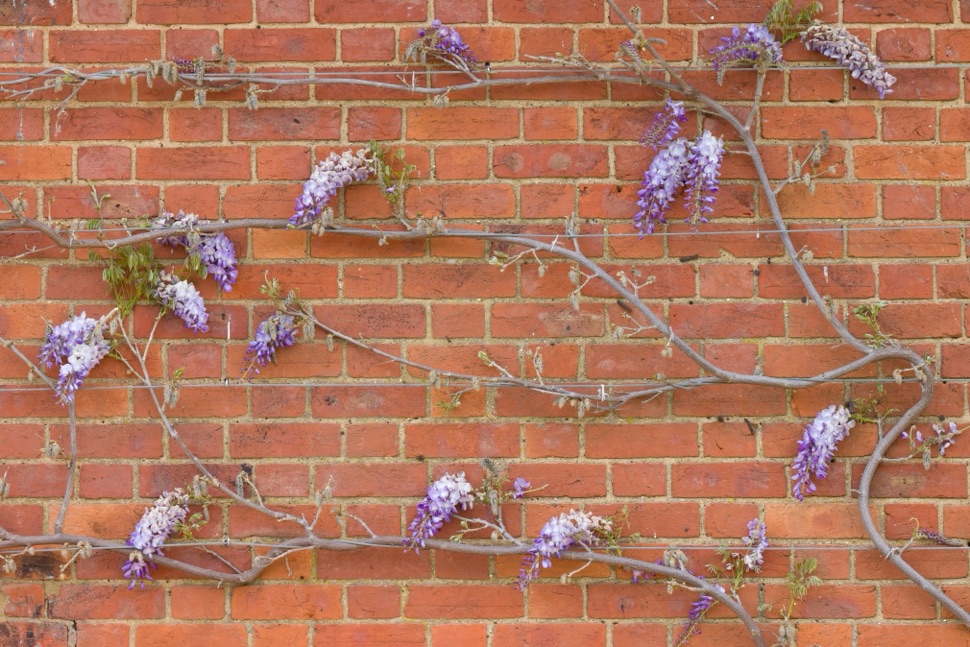
Supporting the plants in your garden does not involve a large investment.
In fact, if you take a DIY approach, you can create bespoke support options for any situation using natural resources or items that would otherwise have been thrown away.
This is often the most sustainable approach too.
By using natural or reclaimed materials for plant support, you will not only save money but will also be doing the right thing for the planet.

To help you understand the variety of options you could consider for supporting climbing plants as they grow, we’ve come up with a range of categories, with suggestions within each category for the different supports that you could consider.
So, read on to get some inspiration for supporting the plants you are growing or wish to grow in your garden:
1) Living Plant Supports
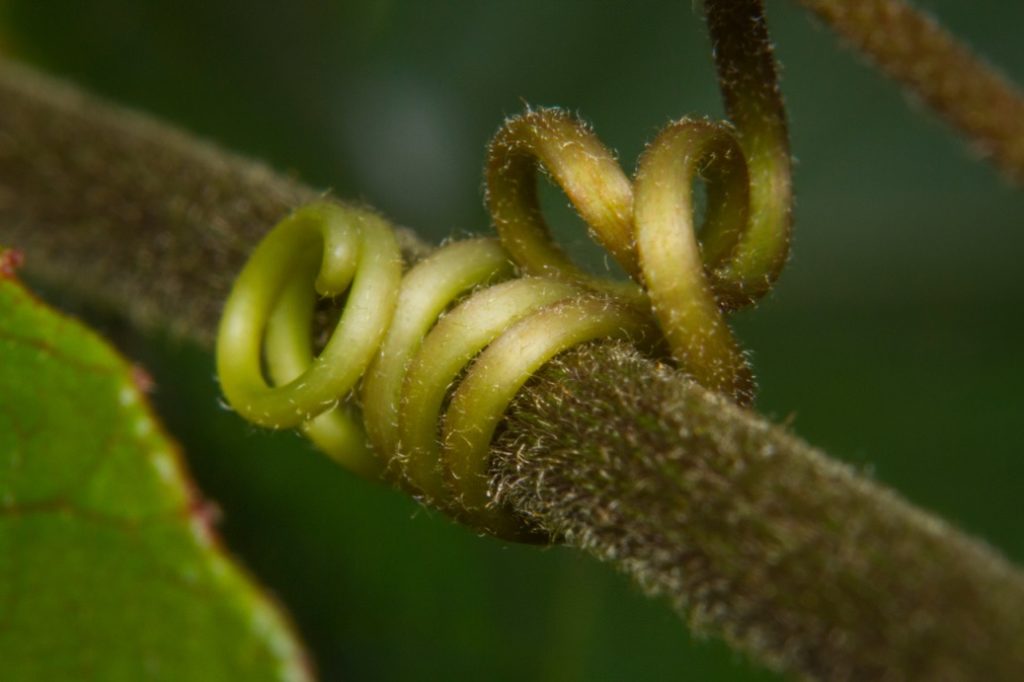
The first category to consider is supporting climbing plants with other plants.
For example, many climbers and vines can be grown up mature trees.
Large mature trees can support even vigorous vines, while even smaller trees can provide support for smaller climbers.
They might also be grown up or through shrubs or hedgerows.

Many vines like honeysuckle and clematis, to give two obvious examples, look wonderful when spreading along a wild hedgerow at the edge of a garden.
Annual climbers and vines can also be supported by other plants.
One of the best-known examples of this is when corn is grown alongside climbing beans (and also squash) in the ‘three sisters’ companion planting plan.1Growing Your Own | The three sisters. (n.d.). Royal Horticultural Society. Retrieved March 14, 2023, from https://www.rhs.org.uk/advice/grow-your-own/features/three-sisters
In this polyculture, the corn is considered the ‘supporting sister’, providing support for the beans in return for the nitrogen fixation that the beans can provide.
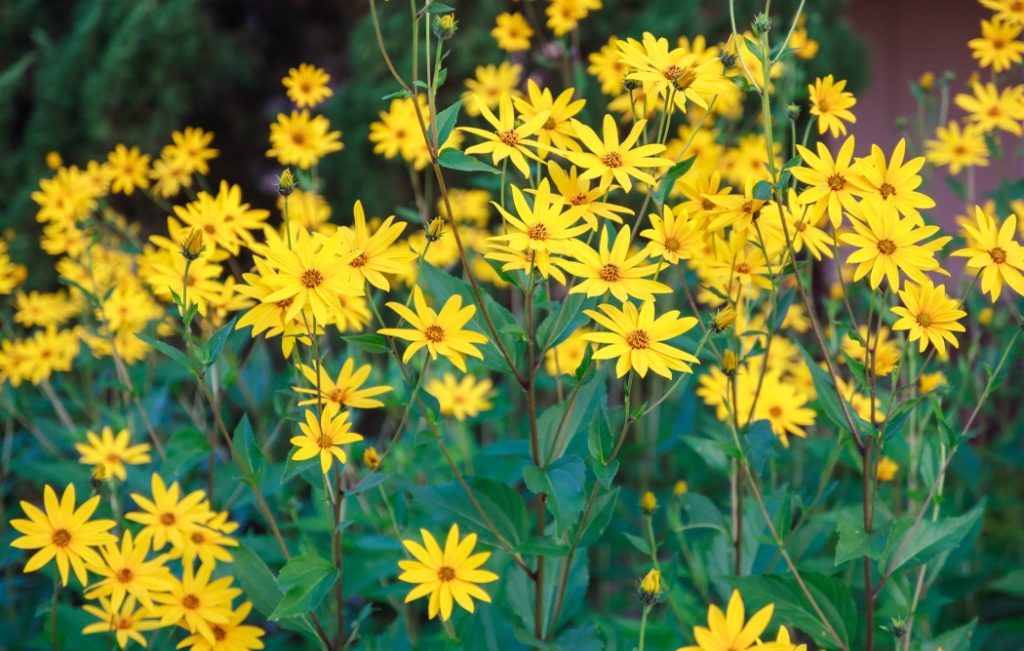
Other tall plants, like amaranth or Jerusalem artichokes, can also provide support for climbing beans and other annual climbers or vines in your vegetable beds.
Sunflowers are also often used in some areas as support for climbers like cucumbers – but caution is advised as sunflowers can stunt the growth of certain other plants grown close by, so yields of certain crops may be affected.
It is not recommended, for this reason, to use sunflowers as support for climbing beans.
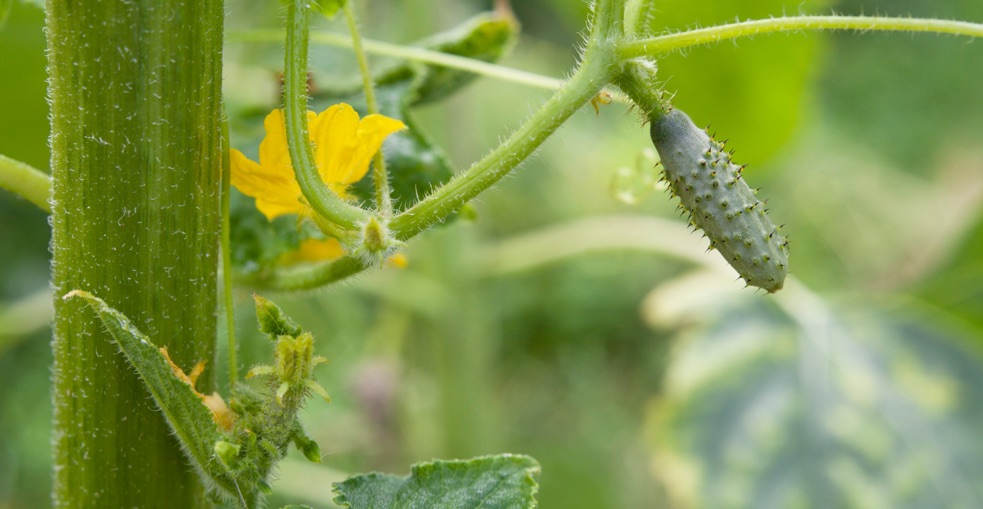
Another thing to consider is that when planted closely, plants like peas may not require as much support and may, at least in part, hold themselves up, working together.
Wide rows of peas are sometimes planted, sometimes with just a string around the sides of the row to stop them from flopping over.
2) Stakes And Canes
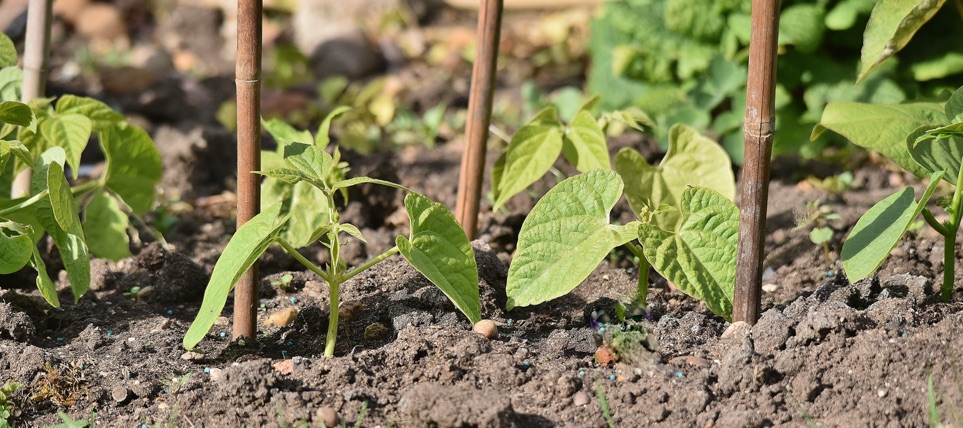
Sometimes, more complicated and larger support solutions are not required and all that is needed is a simple stake or cane.
“When pruning in winter, keep an eye out for material that can be used for staking,” shares Horticultural Consultant Colin Skelly.
“Beware of using material from plants that will root, such as willow.
“My ideal stakes are coppiced hazel because they are long, straight, strong and look great too.”
Individual plants can often be supported with bamboo canes, natural branches or twiggy sticks (like peas, for instance).
Often, it will be possible to source materials for these simple supports from elsewhere in your garden, so be sure to look around before you buy anything new.
3) Trellises For Climbing Plants

Another category involves creating trellises suitable for a wide range of both perennial and annual climbing plants.
Trellises come in many shapes and sizes and can be made from a huge range of different materials.
Trellises may be:
- Fences or other garden boundaries which double as trellises
- Structures placed against a wall or fence
- Vertical, free-standing structures
- A-frame structures
- V-shaped structures

There are, of course, plenty of trellis panels that you can simply buy, but making your own means you can create a tailor-made solution for your garden and for the plants you wish to grow.
They can also be made using organic materials from your garden.
You can use bamboo or you can make a range of different trellis designs using natural branches pruned or coppiced from the trees and shrubs in your garden.
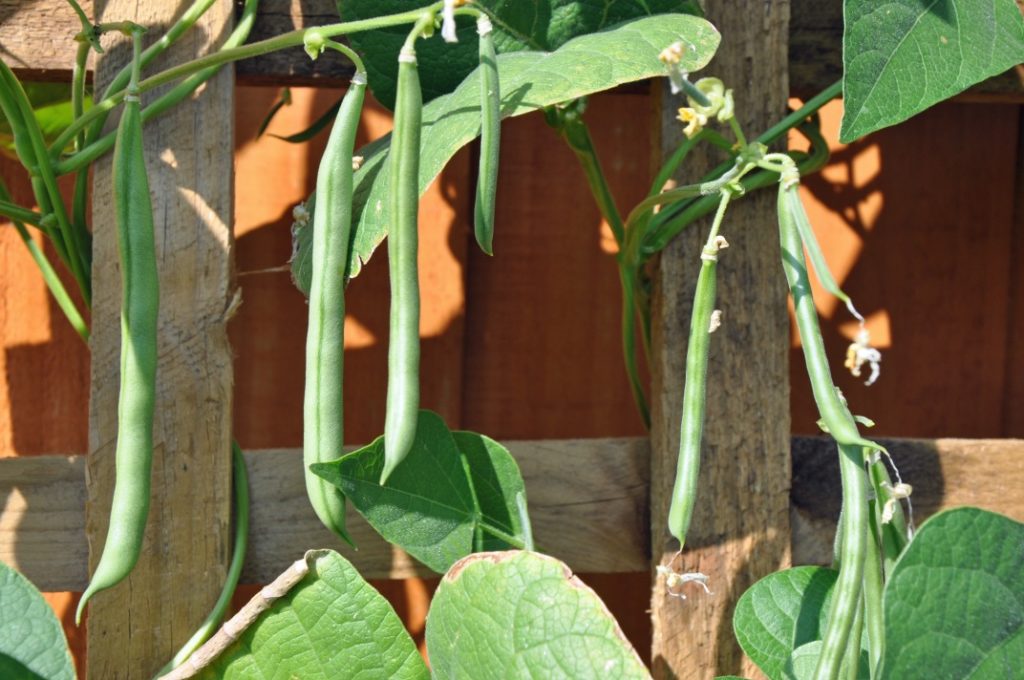
Canes or branches might be held together with screws or tied together with twine.
One interesting thing to note is that you might not even have to buy twine for the purpose.
Plants like stinging nettles can be used to make your own natural rustic twine for garden purposes.2Family activity: how to make string from nettles. (2020, June 24). Berkshire, Buckinghamshire & Oxfordshire Wildlife Trust. Retrieved March 14, 2023, from https://www.bbowt.org.uk/blog/claire-mcclafferty/family-activity-how-make-string-nettles
You might even be able to create a wattle trellis without any fixings at all.
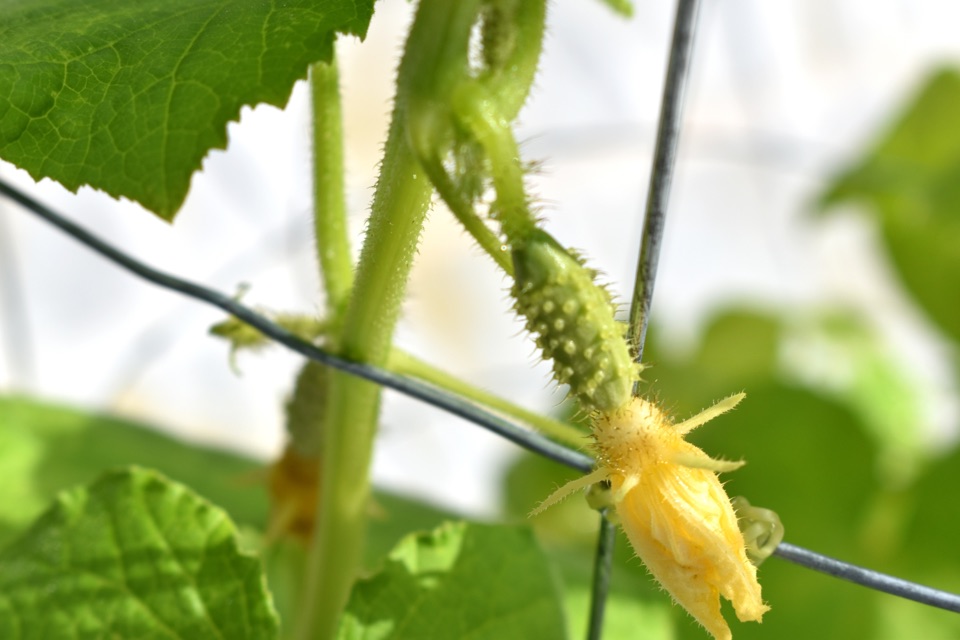
To create a sturdy wattle trellis you will need strong stiff branches to use as upright posts, and flexible branches to weave between these uprights.
You can create a dense screen with this technique, or create a trellis with a more open structure.
A range of trellis structures can also be made using reclaimed materials.
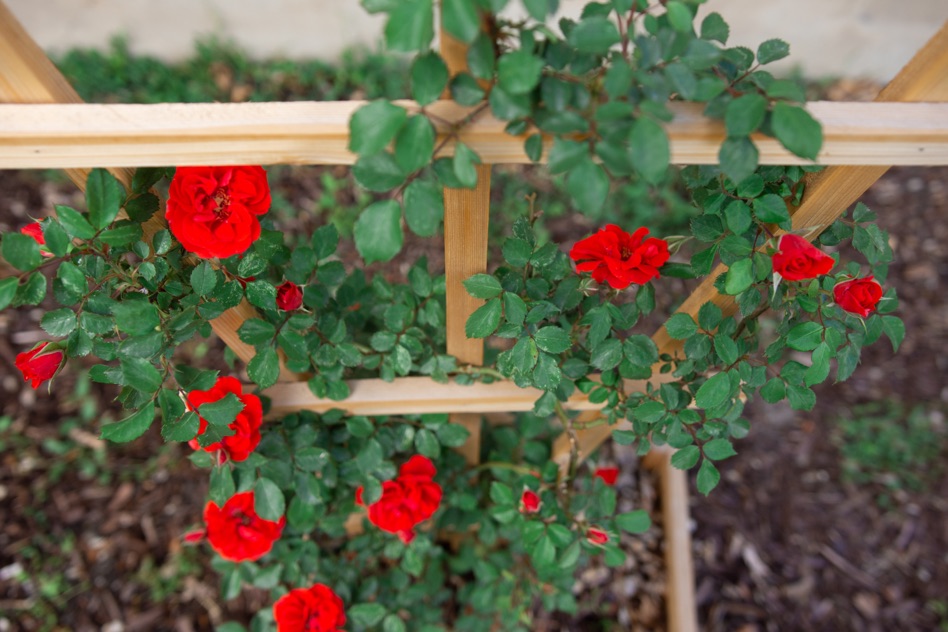
For example, you can make a trellis using:
- Reclaimed wood/wood pallets
- Old doors/windows
- Old plumbing pipes
- Cattle panels
- Reclaimed rebar
- Old fencing/chicken wire
- Reused fishing nets
- The structure from an old metal bed or an old headboard
- Spring structures from an old mattress
- The railing from an old cot or a piece of balustrade
- Old wooden handled garden tools
- An old garden gate

These are just a few ideas and there are also plenty of other old items and materials that can be put to good use.
It is always a good idea to think about what you might already have lying around before you buy any new support structures for your garden.
4) Horizontal Wires On Walls Or Fences
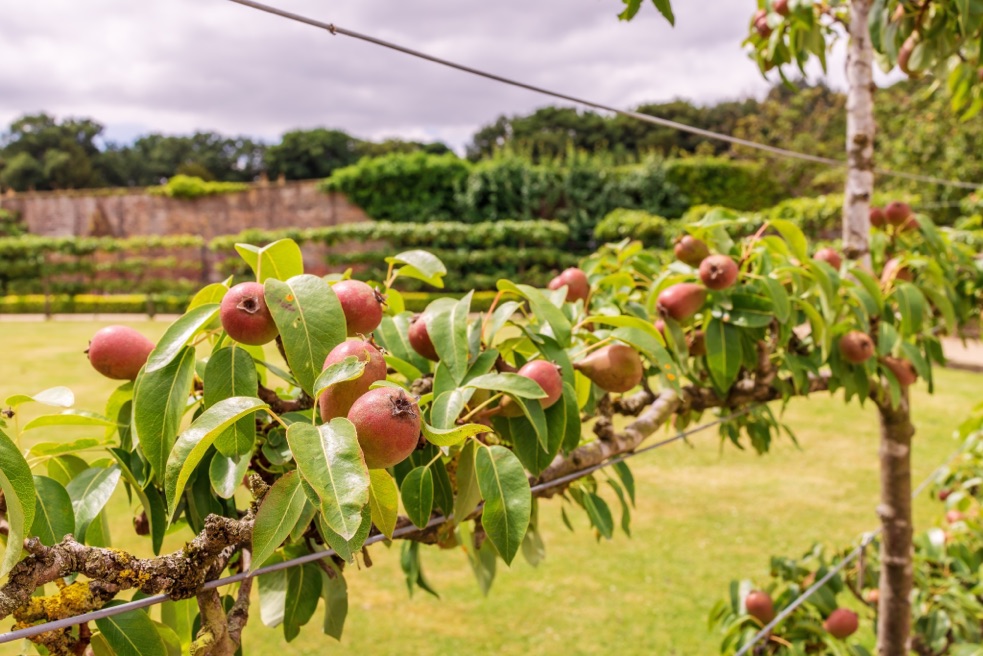
If you have existing walls or fences up which you wish to grow climbing plants on then you might not need to add a trellis at all.
Some climbers are self-clinging, of course, and will not need any support as they grow, but for those plants which do require some support, you might simply have to add a series of horizontal wires across a solid wall or fence to tie plants into as they grow.
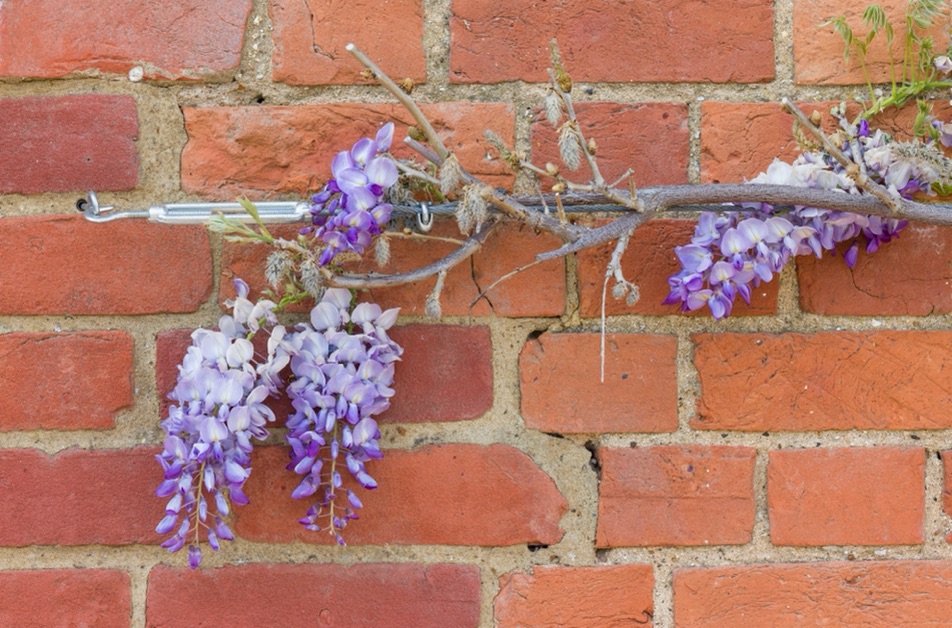
It is important to make sure that both the existing structure and the wires are strong enough to support the plants that you wish to grow, as some climbers are much heavier and more vigorous than others.
You also need to make sure that the wires are tensioned so they do not sag over time.
If you get these things right, this can be an unobtrusive way to support climbers or wall shrubs against an existing garden boundary.
5) Cordon Wires & Frames

Unlike a typical trellis, cordon wires and frames do not have a consistent lattice in the structure.
Instead, a frame is used to support trailing wires or strings up which cordon plants like tomatoes can be grown.
The frames can support the wires or strings only at the top, and the strings can be secured at the base with tent pegs, or looped below the root balls of the plants when they are planted.
Plants are then tied into these vertical wires or strings as they grow.

As with typical trellis supports, the frames for cordoning wires or strings can be made with a range of different materials, including natural branches from your garden, or reclaimed materials.
As above, the frames can be simple vertical rectangles, A-frames, or a range of other shapes.
Since you will have wires or strings hanging down from this frame, you will only need to worry about making the outline of the frame, not a complete lattice structure.
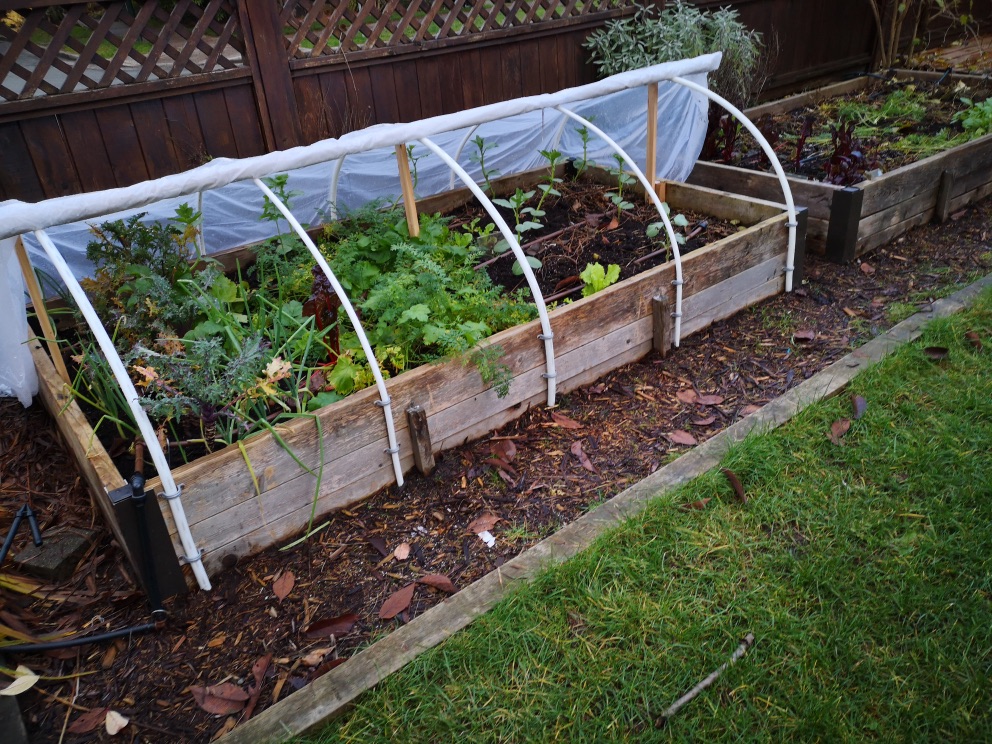
If you are cordoning plants within an undercover growing structure like a polytunnel, you may not need to worry about making a frame at all for cordon plants.
You may be able to run a taut wire between the crop bars, and suspend the wires or strings for cordoning from that.
6) Cage Supports
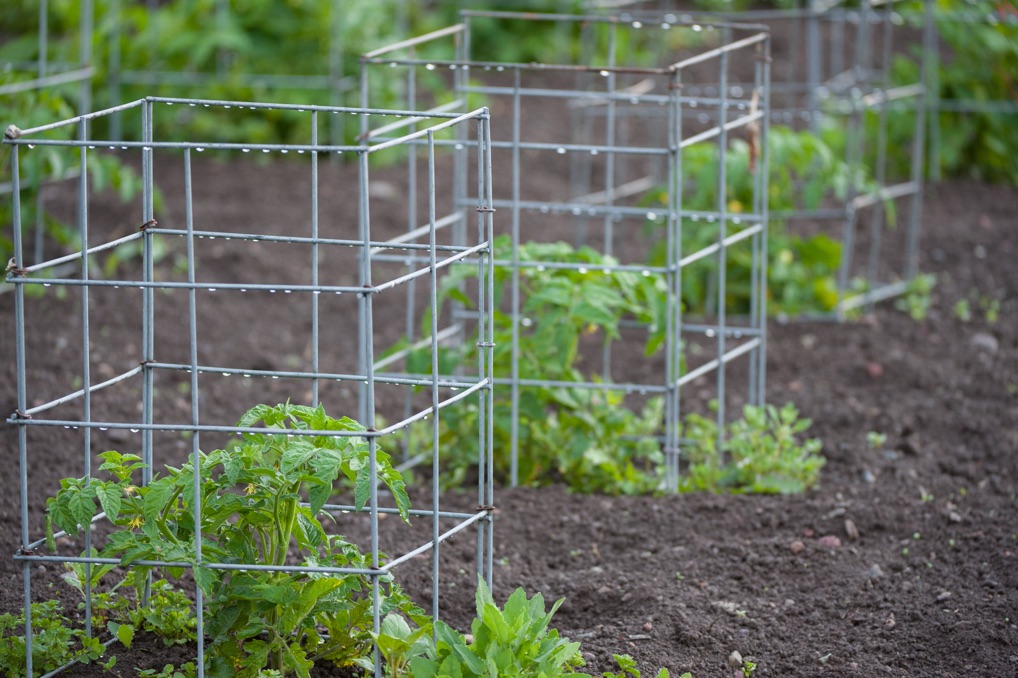
Another group of ideas involves creating a cage-like structure around your climbers and vines to support them as they grow.
This is another idea which could work well for tomatoes which are not cordoned, or other edible climbers and vines, to prevent them from sprawling out too much.
Cage supports can be made from old fencing or chicken wire, woven wood or latticed wood structures, for example.
There are also a range of other inventive reuse solutions to consider.
7) Pillars And Obelisks

Especially in smaller gardens, support structures in the shape of pillars or obelisks can help you make a stand-out feature of climbing plants without taking up a lot of space.
These can be very decorative features as well as functional supports for your plants.
Of course, there are plenty of options that you can simply buy, but you can also make your own support structures of this type relatively easily.
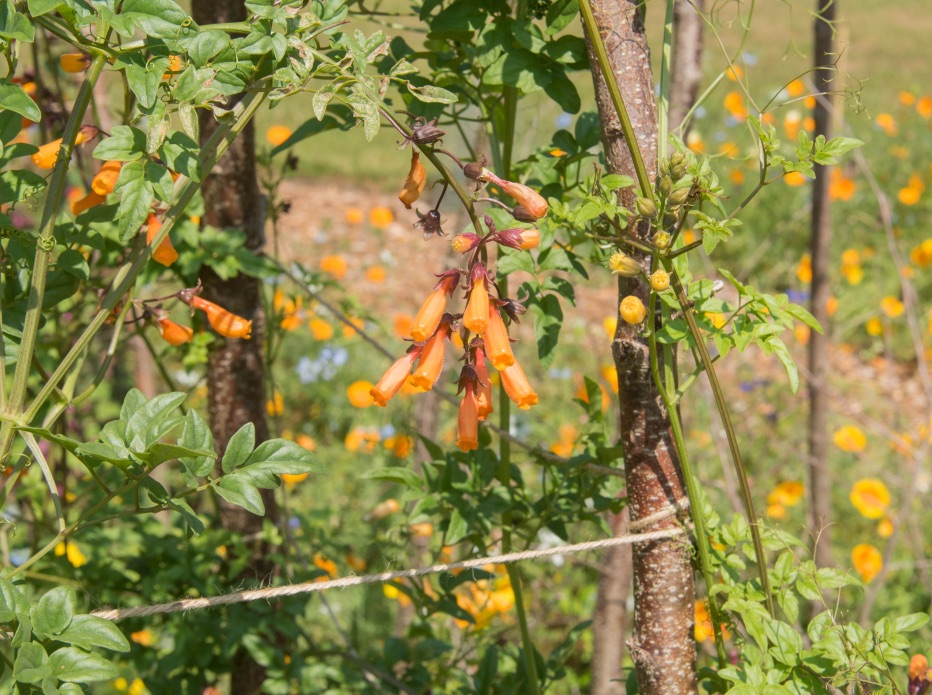
For example, people have used:
- Bamboo canes or natural branches
- Woven willow art structures
- Reclaimed wood
- Old stepladders
- Old plumbing pipes
- The structure from an old garden parasol/umbrella
- Old bicycle wheels
- Golf clubs
- Stacked wicker baskets
- Stacked reclaimed wire cages
8) Arches, Arbours And Pergolas

This next category involves larger decorative structures which can be used to support climbing plants in your garden.
Arches are extremely popular for a quaint cottage garden or English garden look.
Buying or creating arches over pathways over which roses and other flowering climbers can be grown is a great way to define the entrance to a particular garden space, or to mark the way through from one garden room to the next.
Arches can also be created across the top of a raised bed, for example, to grow annual climbers and vines, or between two garden beds to create a walkway between them.

Arbours (covered areas with seating below) or larger pergola structures, are much larger DIY projects, but could also be considered if you have some DIY skills.
Growing fruiting vines like grapes for produce or fragrant climbers to enrich outdoor living spaces can be a great idea, and these sorts of structures can be good ways to support them.
Again, as with other support structures, many reclaimed materials can be used to make your bigger garden projects like these more sustainable and eco-friendly.
References
- 1Growing Your Own | The three sisters. (n.d.). Royal Horticultural Society. Retrieved March 14, 2023, from https://www.rhs.org.uk/advice/grow-your-own/features/three-sisters
- 2Family activity: how to make string from nettles. (2020, June 24). Berkshire, Buckinghamshire & Oxfordshire Wildlife Trust. Retrieved March 14, 2023, from https://www.bbowt.org.uk/blog/claire-mcclafferty/family-activity-how-make-string-nettles
